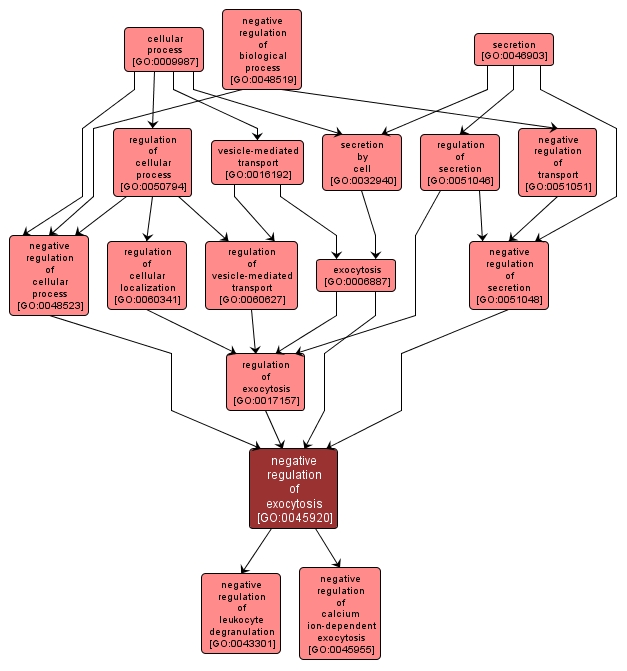GO TERM SUMMARY
|
| Name: |
negative regulation of exocytosis |
| Acc: |
GO:0045920 |
| Aspect: |
Biological Process |
| Desc: |
Any process that stops, prevents or reduces the frequency, rate or extent of exocytosis. |
Synonyms:
- inhibition of exocytosis
- downregulation of exocytosis
- down-regulation of exocytosis
- down regulation of exocytosis
|
|

|
INTERACTIVE GO GRAPH
|














